Steven M. Martinez is the Executive Assistant Director of the Science and Technology Branch of the Federal Bureau of Investigation (FBI). In this role, he is responsible for the executive oversight of the Operational Technology, Laboratory, and Criminal Justice Information Services Divisions. Most recently, Steven Martinez served as the assistant director in charge of the FBI’s Los Angeles Division. He entered on duty as an FBI special agent in January 1987. Since that time, he has served in the Phoenix Division, Washington Field Division, and El Paso Division investigating drug and violent crime cases. He was also assigned to the Los Angeles Division as an assistant special agent in charge, responsible for management of the Organized Crime/Drug Branch and the Cyber Branch.
An investigation into the progress made by the FBI in its ongoing deployment of enhanced biometric technology spanning nearly nine decades
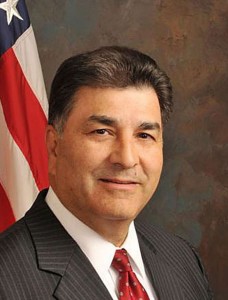 For almost 90 years, the FBI has been a leader in biometrics, using various forms of biometric identification since its earliest days, including assuming responsibility for managing the national fingerprint collection in 1924. More recently, the Bureau’s Science and Technology Branch created the Biometric Center of Excellence (BCOE) to strengthen the organization’s ability to combat crime and terrorism with state-of-the-art biometrics technology. ID People spoke to Steven M. Martinez, Executive Assistant Director of the FBI’s Science and Technology Branch to learn more about the importance of innovative technologies in supporting the organization’s activities and in particular, the development of a biometrics ecosystem, focused on criminal investigation and identity management.
For almost 90 years, the FBI has been a leader in biometrics, using various forms of biometric identification since its earliest days, including assuming responsibility for managing the national fingerprint collection in 1924. More recently, the Bureau’s Science and Technology Branch created the Biometric Center of Excellence (BCOE) to strengthen the organization’s ability to combat crime and terrorism with state-of-the-art biometrics technology. ID People spoke to Steven M. Martinez, Executive Assistant Director of the FBI’s Science and Technology Branch to learn more about the importance of innovative technologies in supporting the organization’s activities and in particular, the development of a biometrics ecosystem, focused on criminal investigation and identity management.
What is the legacy in terms of the use of biometrics in the criminal justice system?
Over the years, biometrics has been incredibly useful to the FBI and its partners in the law enforcement and intelligence communities – not only to authenticate an individual’s identity (you are who are say you are), but more importantly, to figure out who someone is (by a fingerprint left on a murder weapon or a bomb, for example), typically by scanning a database of records for a match.
From our formation in 1908 identification and attribution have been core elements of FBI investigation. Initially confined to biographic and behavioral elements, a fingerprint technical search and matching capability was added in 1924 when the FBI was assigned responsibility for a national fingerprint system and formed the Division of Identification. A Laboratory Division was added in 1932.
Today, three major divisions of the FBI provide person centric biometric and forensic identification services; the Criminal Justice Information Services Division, the Laboratory Division, and the Operational Technology Division. These three divisions comprise the Science and Technology Branch, which is the largest branch of the FBI.
How did face recognition and matching evolve and what role does this technology play in the FBI’s investigation?
 Police photographs, often called mugshots, have been widely used as an aide to identification since the 1800’s. Mugshots have been used in the ‘Ten Most Wanted’ program since March 1950. FBI experts have testified to facial identifications and exclusions for more than 40 years.
Police photographs, often called mugshots, have been widely used as an aide to identification since the 1800’s. Mugshots have been used in the ‘Ten Most Wanted’ program since March 1950. FBI experts have testified to facial identifications and exclusions for more than 40 years.
While face identification meets the Daubert criteria, required to allow expert testimony in federal courts, the present error rate of automated systems, even when coupled with human examiners, does not support individualization. But these systems are very useful for lead generation and we have introduced this technology to support FBI investigations.
Fingerprint based identification has been the standard for forensic matching in criminal investigation for many years. What programs are in place today?
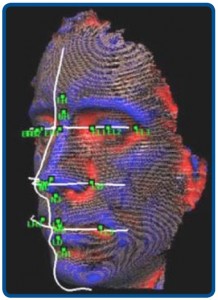 The FBI has been the steward of the national criminal history records information system since 1924; with the 14 impression fingerprint card the technical basis to insure accuracy of the individual’s record. Forensic matching of latent fingerprints began in 1933.
The FBI has been the steward of the national criminal history records information system since 1924; with the 14 impression fingerprint card the technical basis to insure accuracy of the individual’s record. Forensic matching of latent fingerprints began in 1933.
When we advise police organizations on automation of fingerprint based record systems we generally regard 100,000 individuals as the upper limit for a manual system. While it is possible to operate manual systems with millions of records, with sufficient labor and control mechanisms, it is not possible to do it timely by modern standards.
Today the FBI holds criminal history information on more than 66 million individuals and civil records on more than 33 million persons. We frequent receive over 200,000 fingerprint based criminal history checks a day and have peaked at over 300,000. Fingerprint checks are an important element of licensing and pre-employment background checks when authorized by law, and are also important to the fugitive apprehension program, with more than 20,000 hits per month.
Now, advanced fingerprint identification technology provides faster, more efficient IAFIS identification processing, increased search accuracy, improved latent processing services, and allow for seamless searches of ten-flat fingerprint impressions for noncriminal justice purposes.
Within our division, the Latent Print Operations Unit (LPOU) conducts timely, highquality scientific examinations in the area of friction ridge analysis, including the development and comparison of latent fingerprints, palm prints, and footprints; reports findings; provides expert testimony relating to these examinations in legal proceedings; and provides training and forensic field support to the law enforcement community on a national and international level.
Where does voice biometrics fit in the mix – such as voice comparison and speaker authentication?
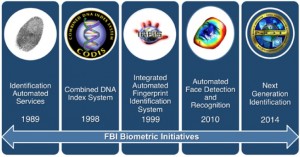 Under Title III and Title 50 of the United States Code the FBI conducts court authorized electronic and other surveillance where the ability to reliably identify individual speakers is of great importance. Nevertheless, we regard speaker identification as an emerging biometric modality, even though the FBI has performed voice comparison and speaker recognition examinations since the early 1960’s.
Under Title III and Title 50 of the United States Code the FBI conducts court authorized electronic and other surveillance where the ability to reliably identify individual speakers is of great importance. Nevertheless, we regard speaker identification as an emerging biometric modality, even though the FBI has performed voice comparison and speaker recognition examinations since the early 1960’s.
While automated speech processing work began during World War II, and has been the subject of extensive research, voice analysis remains a most complex and labor intensive endeavor. The FBI sponsored National Academy of Sciences studies in 1971 and 1979 and many subsequent research activities continuing to the present. In addition to case related examinations, we have three significant voice projects underway. Development of a Type 11 record for the electronic exchange of speech information and inclusion into the next release of the ANSI/ NIST-ITL standard is well along with public comment soon to begin. We are sponsoring the development of a Universal Voice Workstation, which we expect to become a key tool for examiners as well as to play an important role in advancing the Type 11 record. Finally, work has begun to form a Scientific Working Group on Voice Identification.
DNA is being mooted as an element of importance within the biometrics ecosystem. What progress is being made in this regard?
While DNA has not been recognized as a biometric until recently, due to the logistic delays in physical collection and transport to the laboratory, along with laboratory processing and analysis time, its forensic importance cannot be overstated. Indeed it is regarded as the ‘Gold Standard’ among the forensic disciplines.
That DNA could be used for individualization was not discovered until 1984. The first DNA based conviction occurred in 1988. By 1990 the FBI had an operational pilot of the Combined DNA Index System (CODIS) with 14 crime laboratories participating. In the DNA Identification Act of 1994 Congress authorized the FBI to establish a national system which went into operation in 1998.
In recent years the FBI has partnered with other federal agencies to develop prototype equipment to analyze nuclear DNA of known subjects at the point of service with minimal human intervention. We have now received production prototype equipment from two sources with equipment from additional sources expected in the future, which is leading to rapid advance in this modality.
How important is research and development in the FBI, with particular reference to Next Generation Identification?
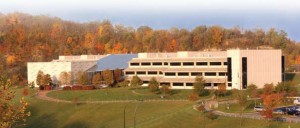 As our division is primarily an operational support organization for the FBI and the national criminal justice, national security and intelligence communities, research and development is a small part of what we do. Consequently, whenever possible we purchase and use commercially available technology, but for mission critical activities there have been some notable biometric and forensic technology advances in R&D from the FBI.
As our division is primarily an operational support organization for the FBI and the national criminal justice, national security and intelligence communities, research and development is a small part of what we do. Consequently, whenever possible we purchase and use commercially available technology, but for mission critical activities there have been some notable biometric and forensic technology advances in R&D from the FBI.
For example, we pioneered the silver nitrate method of latent fingerprint development in 1933, and study of the scientific basis for latent matching and advancing the state of the art continue to be important up to the present day. The FBI has been keenly interested in applying technology to fingerprint identification since the beginning and in 1963 we began a long partnership with the National Bureau of Standards, (NIST), to develop image based matching technology.
The state of the art gradually advanced with commercial systems appearing in the 1980’s. We deployed an early effort named Identification Automated Services (IDAS) in 1989 with limited matching capability, but the technology was not yet ripe for a national scale system. Another decade would pass until we deployed a one of a kind made to order system – the Integrated Automated Fingerprint Identification System (IAFIS) in 1999. Finally in 2010, we began to realize our original R&D goal when we acquired and deployed commercial fingerprint matching technology in phase 2 of Next Generation Identification (NGI).
We have also been a pioneer in forensic DNA analysis; especially in selecting genetic locations that allow individualization without revealing sensitive personal information, establishing the statistical underpinnings for reliable and small error rates, as well as developing and promoting quality assurance standards. There has never been an erroneous DNA based identification in the United States during the more than 20 year life of the program. During the same period hundreds of convicted persons have been exonerated using DNA evidence.
Facial recognition and identification is another emerging modality and may well constitute the next breakthrough area. The FBI has sponsored R&D efforts since 1995 and increasingly partners with other federal agencies, and occasionally international partners, to advance the state of the art.
How critical is the use of biometrics in urban security as both a preventative and criminal activity investigation measure to the safety of today’s modern cities?
Commercial camera surveillance systems have become ubiquitous in many cities. Increasingly traffic enforcement camera systems are being deployed. Face matching technology has begun to see significant commercial use.
Nearly every arrest involves a booking process that includes collecting frontal and profile photographs. It is clear that the criminal justice system holds a treasure trove of mugshot data that can potentially be exploited to solve crimes and, by removing serial criminals from society, prevent some future incidents.
In view of this, the FBI has been sponsoring a Face Identification Legal Series. So far confined to federal agencies, we anticipate that in future it will expand to include state and local law enforcement and eventually the general public.
How does this activity operate within the bounds of the civil liberties and privacy context?
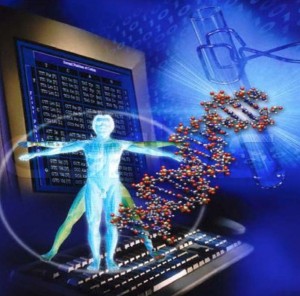 The constraints of our Constitution and our laws, as well the public’s view of the appropriate balance between privacy and civil liberties and those technical measures that might be employed to increase public safety, must and will inform the development and uses to which we put face matching systems.
The constraints of our Constitution and our laws, as well the public’s view of the appropriate balance between privacy and civil liberties and those technical measures that might be employed to increase public safety, must and will inform the development and uses to which we put face matching systems.
We recognize that there are privacy and civil liberty considerations when biometrics are used in identification systems. We have dedicated privacy and ethics attorneys as well as specialized legal counsel supporting our use of the various modalities. As a matter of policy we conduct Privacy Impact Assessments when any new information system is under consideration.
While most programs are confined to specific tasks and areas, what are the motivations behind large-scale biometric systems, if and when necessary?
As indicated earlier, we conduct R&D only to support core mission areas when commercial sources are not available. So too we only develop systems when we must. Few biometric modalities have been deployed at national scale, and seldom until the FBI has done so. However, due to mission need we often find ourselves at the cutting edge in introduction of large-scale operational biometric systems. Therefore, when technology allows quantum advances in identification in important FBI mission areas, the benefit significantly outweighs the cost, and oversight concurs in that assessment, the FBI will deploy that technology, whether purchased commercially or developed in conjunction with partners.
